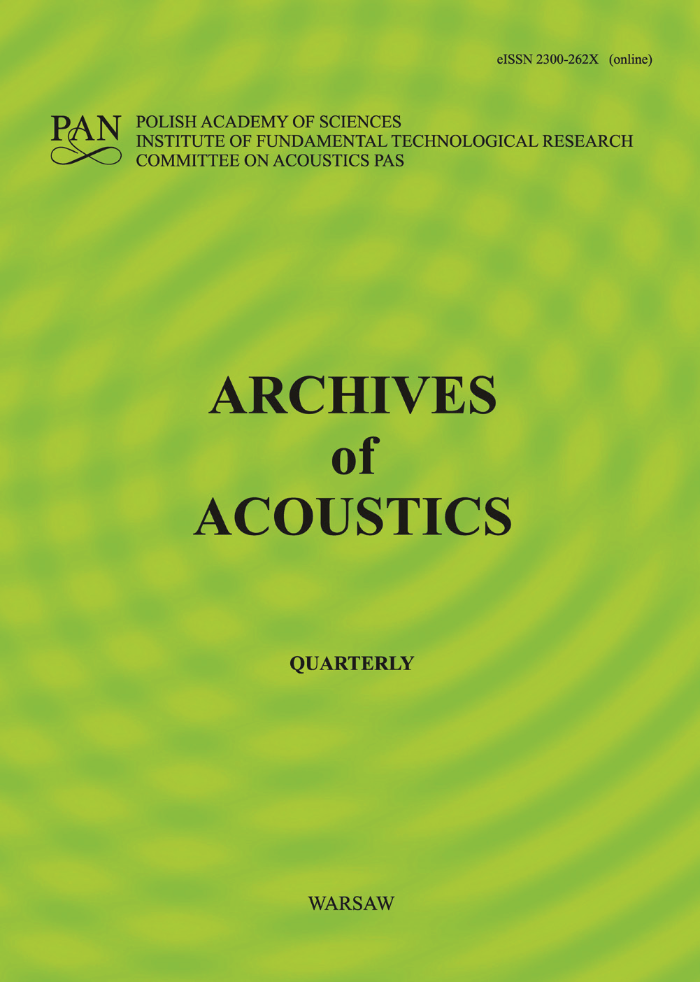Abstract
The results of investigations of the influence of a suspended ceiling with cross-shaped slits on the hall reverberation time, sound absorption coefficients, sound absorption of the entire hall, acoustic centre of gravity and musical sound clarity index C 80 are presented. The investigations were conducted in a scaled physical model of the hall M 1:25. The selection of the scale and materials of the model is substantiated. The main characteristics of the spark sound source and the analogue-code transducer are quoted. The investigations revealed that 100 cm wide slits between the suspended ceiling planes located 100 cm from the rigid surface of the ceiling reduce the reverberation time by 1.14 s at resonant frequencies of 200 Hz and 250 Hz. An increase of the height of the suspended ceiling up to 400 cm is of importance only at low frequencies. The sound absorption coefficients show a maximum increase at the resonant frequencies of 200 Hz and 250 Hz, the increase being proportional to the decrease in the height of the suspended ceiling. When the height equals 400 cm, the absorption coefficients tend to decrease rather than increase throughout the whole frequency range except for the resonant frequencies. The overall sound absorption of the hall is increased to 60 m2 only at the resonant frequencies and at the ceiling height of 100 cm. At the height of 400 cm, the absorption is reduced by 60-100 m2 throughout the frequency range, though the reverberation time is also reduced. The resonant suspended ceiling affects the acoustic centre of gravity and the music sound clarity index. The changes in all the above-mentioned acoustic indicators are determined solely by the cross-shaped slits between the ceiling planes. No additional sound-absorbing materials were used.References
[1] V. STAUSKIS, Sound absorption qualities of a cross-shaped isolated acoustic resonator, Acta Acustica, 82, Suppl. 1, p.264 (1996).
[2] V. STAUSKIS, An impedance method of the suspended ceilings acoustic absorption evluation [in Lithuanian], Statyba (Building construction), Nr. 1 (5), p. 106 (1996).
[3] V. STAUSKIS, The sound absorption of an isolated resonator with a cross-shaped slit and its dependence on the number of resonators, Statyba (Building construction), Nr. 2 (6), p. 105 (1996).
[2] V. STAUSKIS, An impedance method of the suspended ceilings acoustic absorption evluation [in Lithuanian], Statyba (Building construction), Nr. 1 (5), p. 106 (1996).
[3] V. STAUSKIS, The sound absorption of an isolated resonator with a cross-shaped slit and its dependence on the number of resonators, Statyba (Building construction), Nr. 2 (6), p. 105 (1996).


